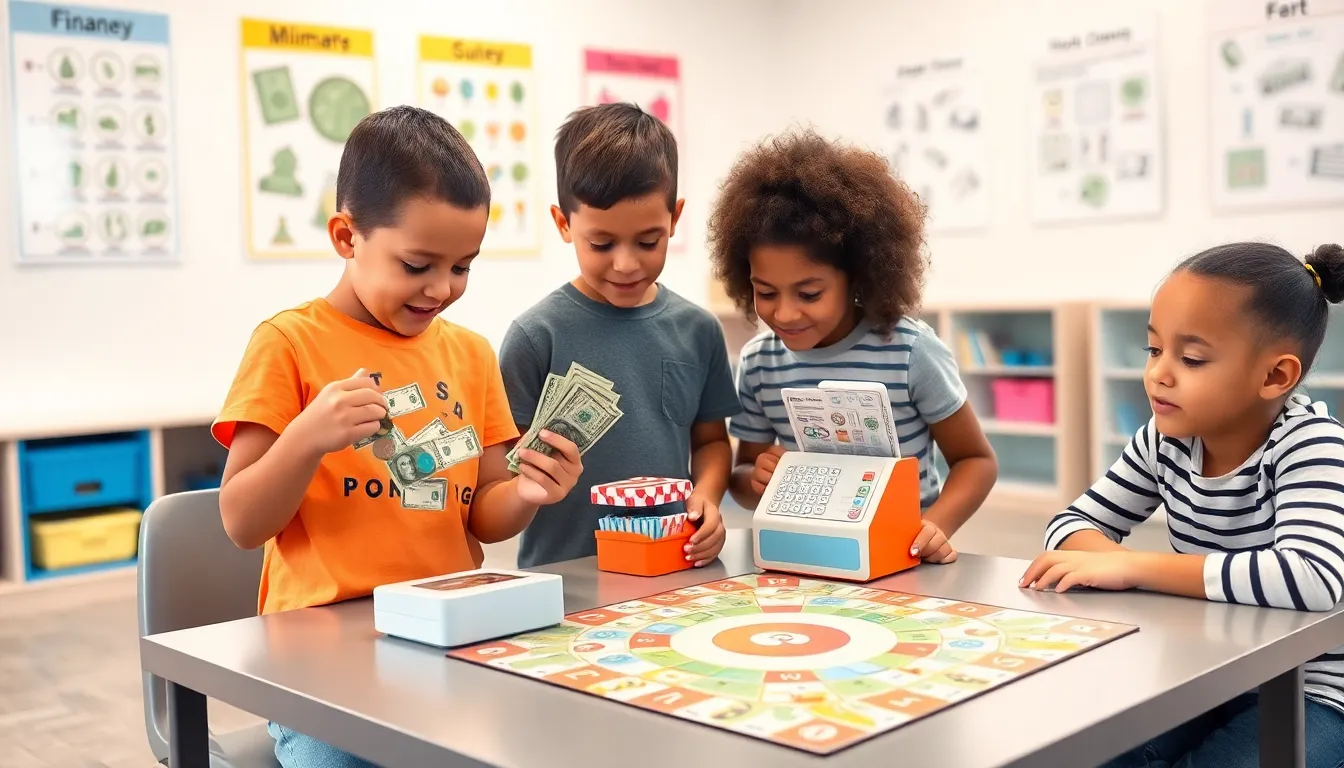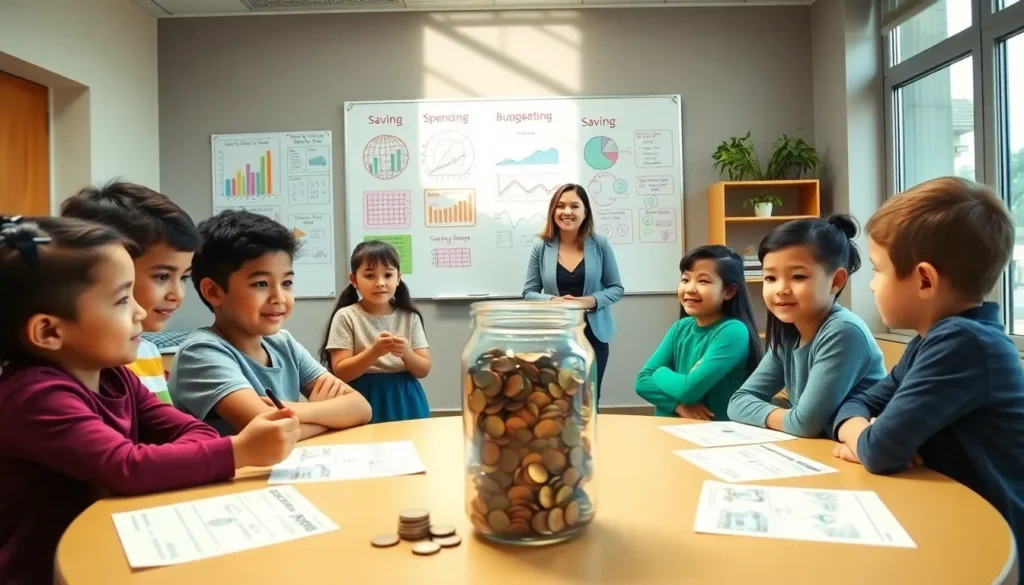Table of Contents
ToggleImagine a world where every child grows up to be financially savvy, making money decisions with confidence and flair. Sounds dreamy, right? Well, get ready to turn that dream into reality. With a bit of guidance, we can equip our kids with the tools they need to navigate the tricky waters of personal finance. From saving pennies to strategizing investments, this article dives into the essentials of personal finance for kids, serving up a scoop of fun along the way. Let’s embark on this financial adventure and set those little ones up for a fabulous future.
Understanding Money Basics

Understanding how money works is the foundation for financial literacy. For kids, this means grasping the importance of earning, spending, and saving. Concepts such as coins, bills, and the value of items can be taught through everyday activities. For instance, using real money when playing store can provide a tangible sense of value. When children see the difference between a quarter and a dollar, they start to appreciate what they can do with each.
Games are another engaging way to introduce money concepts. Board games like Monopoly teach players about buying, selling, and managing funds. It’s not just fun: it’s practical. By fostering a playful environment, kids learn about money in a way that doesn’t feel like a lecture. Through these interactions, they begin to understand that money isn’t just paper, it’s a tool for creating opportunities.
The Importance Of Financial Literacy
Financial literacy is vital. It’s about making informed decisions with money, which affects everything from shopping to investing. Research shows that students with financial literacy are better equipped to handle their personal finances as adults. By instilling this knowledge early on, parents can help shape a financially responsible generation.
A financially literate child understands concepts like budgeting and debt. But it doesn’t stop there. This knowledge leads to wise investment choices in their teenage years and beyond, potentially affecting their quality of life dramatically. It’s about setting them up for successful futures where they can make choices, save for what they want, and avoid drowning in debt.
Teaching Kids About Income
Income is a cornerstone of finance education. Kids should be taught how people earn money, whether through jobs, allowance, or creative enterprises like selling lemonade. Encouraging entrepreneurship can spark ambition and teach valuable lessons about effort and reward.
Saving Strategies For Children
When it comes to saving money, the earlier the better. Setting aside a portion of any income, be it allowance, birthday gifts, or earnings from chores, instills a habit of saving that can last a lifetime. Simple techniques like using a clear jar can visually motivate children to see their savings grow.
Setting Savings Goals
Goals give saving a purpose. By encouraging kids to save for something special, whether it’s a toy or a game, they learn about delayed gratification and patience. Each goal achieved builds confidence, reinforcing the idea that saving pays off over time.
The Concept Of The Allowance
Allowance is a wonderful tool for teaching financial responsibility. By providing a set amount of money regularly, parents can model money management without pressure. The key is to encourage children to make decisions about their money.
Spending Wisely
Before kids can spend, they need to understand how to make wise choices. Encouraging them to think critically about purchases fosters responsible spending habits.
Making Smart Purchase Decisions
Ask them questions like, “Do you really want that toy, or is it just a fleeting fancy?” This creates an opportunity for discussion and reflection, which is crucial. Compiling a list of pros and cons before any purchase can also be enlightening.
Understanding Needs Vs. Wants
Differentiating between needs and wants is a milestone in financial education. Teach kids that while needs are essential (like food and clothing), wants are typically extras. This awareness helps prioritize spending, leading to better financial outcomes.
Encouraging Charitable Giving
Teaching kids about money also involves sharing it. Introducing the concept of charitable giving can nurture empathy and community awareness. Encouraging children to set aside a portion of their earnings or allowance for charity not only teaches kindness but also reinforces the value of community. It’s about showing them that money can make a positive difference, not just in their lives but in the lives of others.
Introducing Investing Concepts Early
Investing might seem like a complex subject for kids, but it doesn’t have to be. Start small by explaining the basic idea: putting money into something with the expectation of future profits. Use age-appropriate resources like games that simulate the stock market, or even involve them in family investment discussions. Understanding risk versus reward can set the stage for smart investments as they grow.
Creating A Kid-Friendly Budget
Budgeting is the backbone of financial management. Kids can learn to create simple budgets based on their income and expenses. Use a chart or app tailored to children, focusing on three categories: saving, spending, and charity. Engaging them in budget discussions helps them understand tracking where their money goes, setting them up for better financial management skills down the road.








